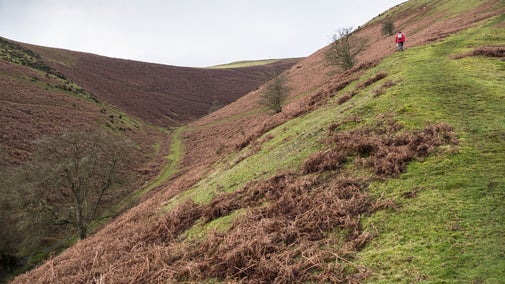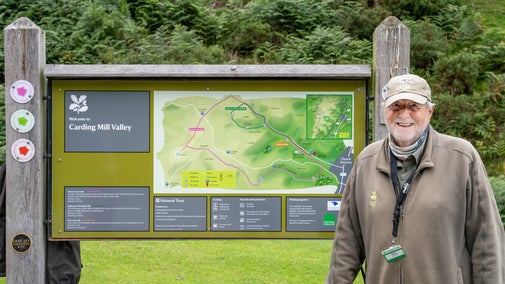Working with farmers
The future of the Shropshire Hills depends on thriving farms which produce high quality food and take care of the landscape. We are working with local farmers to explore ways of managing the land that create a healthy natural environment, restore the characteristic landscape of the area, and increase wildlife as part of a profitable farm business.
The Upper Onny Farmers Group, facilitated by the Stepping Stones Project, have been involved in a number of activities including several Test and Trials of the proposed new Environmental Land Management (ELM) schemes. We hope this will influence Government thinking about future approaches to payment schemes and farm planning that support farmers in delivering sustainable environmental outcomes.
This part of the programme is delivered in partnership with the Shropshire Hills National Landscape.
Working with local communities
To be successful the programme also needs to work closely with the communities who live and work within the project area, as well as people who visit the area. We are trialling approaches to community volunteering on farms, as well as in the wider landscape.
The Stepping Stones programme is exploring ways to support and build upon the good work of established local community groups such as the Marches Meadow Group, Restoring Shropshire’s Verges, Caring for God’s Acre and four local community wildlife groups. These local community and volunteer-based groups are undertaking work that enhances the quality, quantity and connectedness of wildlife habitats within the Shropshire Hills. Stepping Stones is keen to help these groups extend their reach and impact across the programme area.
As well as our work with local farmers, we also offer advice and support to non-farming landowners, from people with smallholdings down to wildlife gardeners. We can support delivery of schemes such as hedge planting and meadow creation via the Stepping Stones volunteer group.
We also aim to engage the wider community through participation in events, evening talks for local groups, and appearances on loacl media and our youTube channel.
Creating and managing stepping stones
The third aspect of Stepping Stones is our work supporting the acquisition and management of 'stepping stones' in the landscape, either by the National Trust or one of our partner NGOs or community groups. For example, Stepping Stones has been heavily involved with the management of the National Trust's 'satellite' sites to the Long Mynd, such as Jinlye Meadows, Barns Farm and Fir Tree Farm Meadows, as well as supporting the Middle Marches Community Land Trust in their acquisition and management of several local sites. We also run work parties to carry out important habitat management in support of Butterfly Conservation, Shropshire Wildlife Trust, Natural England and on SSSIs owned by private landowners.
We have recently helped produce twelve Species Action Plans (SAPs), commissioned by Natural England and the Stepping Stones Project. These SAPs cover the Stepping Stones project area but can be adopted outside of this area. They are living documents intended to be amended/updated.
The species which now have action plans are: Dipper, Willow tit, Snipe, Tree pipit, Small pearl-bordered fritillary, Bilberry bumblebee, Upland dragonflies, Dormouse, Otter, Cowberry, Devil’s bit scabious and Yellow mountain pansy. The species have been chosen to represent the key habitats in the area: Rivers & wetland; Heath/acid grassland; Deciduous woodland; Ffridd; Species-rich grassland.
The historic environment
The historic environment of the Stepping Stones Project area is of great significance. Important remains can be found from almost every period of history from the Neolithic to the present day. Together these historic features make up the landscape as it stands today, with all areas of the land bearing scars or remnants of its past use and history. The influence of this historic land use is also reflected in the wildlife and habitats to be found in the area today. Stepping Stones has helped fund various pieces of work related to our historic landscape, including a place name project looking at old field names, the retoration of some prehistoric features such as the ditches of hill forts, and the LiDAR data which is now available for the Long Mynd. You can watch a webinar on the Historic Environment of the Stepping Stones area via our YouTube channel.


























